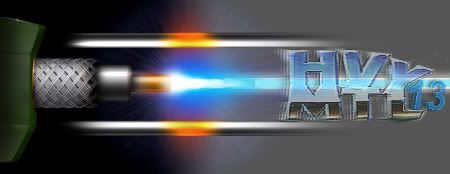Procrustes
Posts: 633
Joined: 3/30/2003
From: Upstate
Status: offline

|
quote:
ORIGINAL: wdolson
I'm not sure if HansBolter is talking about the link to the Myers Briggs type test or the other one posted recently. I would not assume any particular political bias on the part of the person who wrote the test, but it does sound like the test creator had some kind of bias they didn't correct for. There are a lot more biases in the world than political left/right biases.
....
Hi Bill,
Thanks for your insights and postings - very interesting!
Based upon what he quoted, I think Hans was talking about the link to the IPIP-NEO personality test. The IPIP-NEO is an adaptation of the commercial NEO-PI-R and it does not claim to be equivalent. You can get more information on the entire IPIP (International Personality Item Pool) here: http://ipip.ori.org/.
Before you decide that "it does sound like the test creator had some kind of bias they didn't correct for" you might want to take it yourself. Also, you can comment on the item pool if you want to - just go to the link above.
The NEO and the Myers-Briggs are based on slightly different theory - here's a summary, though you can find more here: http://www.centacs.com/quickstart.htm
For three decades, the training community has generally followed the assumptions of the Myers-Briggs Type Indicator (MBTI) (Myers & McCaulley, 1985). These assumptions included:
· a four-dimension model,
· bimodal distribution of scores on each dimension,
· sixteen independent types,
· the concept of a primary function determined by Judger/Perceiver preference, and
· a grounding in the personality theory of Carl Jung (1971).
The emerging new paradigm is not a radical departure from the MBTI, but rather more of an evolution from it. But, the new paradigm is sufficiently different from the old one to require a significant shift in thinking. For example, the new paradigm involves:
· five dimensions of personality,
· a normal distribution of scores on these dimensions,
· an emphasis on individual personality traits (the type concept is gone),
· preferences indicated by strength of score, and
· a model based on experience, not theory.
Here are the caveats that you had to agree to before the online version was given - I think they lay out a lot of the caveats that you have also expressed:
Purpose of this On-Line Inventory
* The primary purpose of this on line inventory is to educate the public about the five factor model of personality.
* More specifically, the report explains the likely consequences of one's standing on five broad personality domains.
* These broad domains cover normal differences in personality that should be obvious to people who know you well.
* Secondarily, this inventory estimates your standing on the 5 broad domains and 30 subdomains of personality.
* The inventory does not reveal hidden, secret information about you nor does it assess serious psychological disorders.
* The report is designed to be objective, not pleasing or flattering.
* Measurement error, misunderstandings, carelessness, and mischievous responding can invalidate the report.
* If knowledgeable acquaintances disagree with the test results, then the results are wrong.
Acknowledgment that You Understand the Limitations of the Test Results
Before you can access the test, you must endorse the statements below by clicking the checkboxes.
Yes, I understand that responding to all items on this inventory is time consuming and that sometimes technical difficulties prevent the results from being displayed. I am responding to this inventory with the full knowledge of the risk that I might not receive results. I accept full responsibility and risk for the time I invest in responding to this inventory.
I understand that the primary purpose of this site is to educate the public about the five factor model of personality, and only secondarily, to estimate the respondent's standing within the five factor model.
I think they did a good job of summing it up.
Best wishes,
Procrustes
|
 Printable Version
Printable Version











 New Messages
New Messages No New Messages
No New Messages Hot Topic w/ New Messages
Hot Topic w/ New Messages Hot Topic w/o New Messages
Hot Topic w/o New Messages Locked w/ New Messages
Locked w/ New Messages Locked w/o New Messages
Locked w/o New Messages Post New Thread
Post New Thread